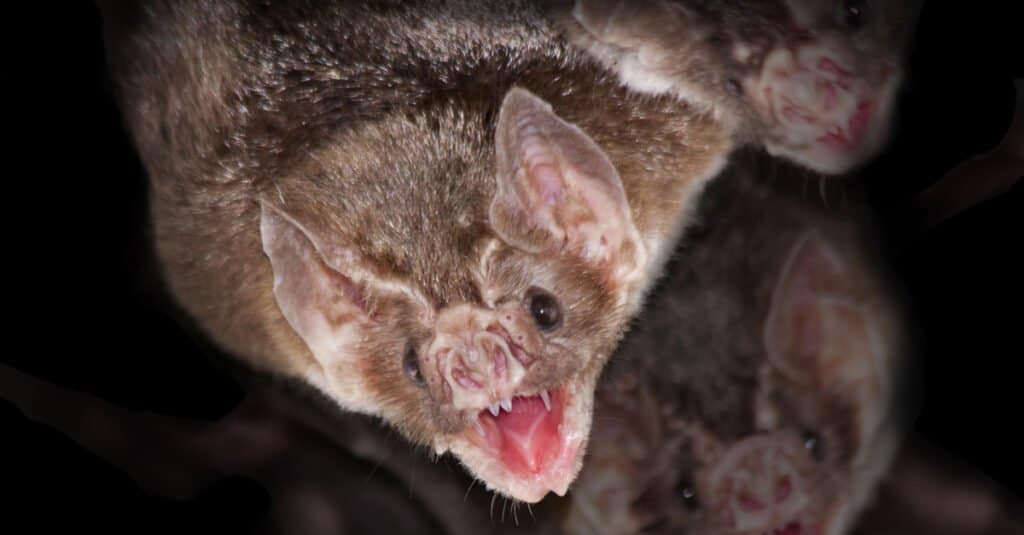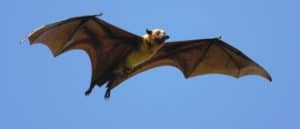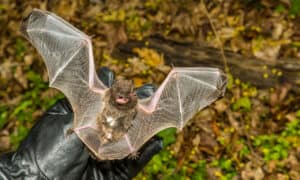Bats are unique animals who have had their forelimbs adapted into wings and they are the only mammals that are capable of true and sustained flight. They are found almost everywhere in the world and are best known for their incredible navigation skills. However, bats also have a bit of a bad reputation and are often misunderstood. In fact, it’s not unusual for them to be described as flying rats. Therefore, it’s no surprise to hear the question “are bats rodents” being asked. But is it true?
In this article, we’ll take a closer look at these fascinating animals and discover whether they really are rodents. We’ll learn about what makes a rodent a rodent and whether bats fit that category. We’ll also discover what makes bats so special, including how they navigate and whether there are any other flying mammals. So join us as we answer the question, “are bats rodents?”
What Makes a Rodent a Rodent?

Rodents have large incisor teeth that continually grow.
©No machine-readable author provided. Cszmurlo assumed (based on copyright claims) / CC BY-SA 3.0 – License
Rodents, just like bats, are placental mammals. This means that they give birth to live offspring and rear them on milk that they produce from their mammary glands. Most rodents (although not all) have stocky bodies with short limbs and long tails. However, their main defining feature is their teeth. Rodents have a pair of large incisor teeth that grow continually. As their incisors are constantly growing, rodents have to gnaw constantly to prevent them from becoming too long.
Rodents’ incisor teeth are extremely sharp and usually have layers of thick enamel on them. The combination of thick enamel on the front of the teeth and softer dentin on the rear means that the back of the teeth wears away quicker than the front. This creates a unique self-sharpening action as the teeth grind against each other. The harder enamel becomes chisel-shaped and is razor sharp. Having teeth that are super sharp is essential for rodents as they have a habit of chewing anything they can get their teeth into. Rodents, such as beavers, can even chew entire trees down in a short space of time as their teeth are that strong. Additionally, although rodents have pretty impressive teeth, they actually lack canine teeth. Instead, they have a large gap between the incisors and the premolars.
Are Bats Rodents?

Bats have tiny, sharp canine teeth that rodents lack.
©belizar/Shutterstock.com
Bats are not rodents. Despite their resemblance to mice and rats, there are actually some major differences between bats and rodents. Bats and rodents are not related and are from completely different orders. They also have very different teeth and use them in different ways. Additionally, rodents don’t fly, while bats do. Bats are actually completely unique animals. Let’s discuss them in more detail below.
Bats are from a different Order
All rodents are from the order Rodentia and their name means “to gnaw” in Latin, which is particularly fitting, given what we’ve just learned about their teeth. Rodentia is the largest order of mammals and contains more than 2,000 different species across approximately 440 genera.
Bats are from the order Chiroptera which is the second-largest order of mammals. Chiroptera is derived from the Greek for “hand wing” which is quite literal for bats as their wings are essentially four fingers and a thumb connected by skin. There are around 1,400 species of bat, and there are a variety of sizes and shapes. Bats range from the tiny bumblebee bat, which is no more than two inches long to flying foxes which have a wingspan of up to 5 feet.
Bats don’t Gnaw
As we’ve established, rodents have to gnaw a lot to prevent their incisors from getting too long. However, bats don’t gnaw, and this is because their incisors don’t grow continually as rodents do. In fact, it might come as a surprise, but bats actually don’t gnaw, chew, or nibble on anything they shouldn’t. This means that they don’t gnaw on wooden structures or chew through electrical wires and any such damage that a rodent has probably done instead.
Another way that bats don’t fit into the rodent category regarding their teeth is through their canine teeth. This is because bats have canine teeth while rodents lack them. One of the main things that bats have a bad reputation for is sucking blood. They tend to get this reputation because of their canine teeth, which are also known as fangs. Although their canine teeth are super sharp and can look quite fearsome, most bats don’t feed on blood. Instead, it is usually only vampire bats that feed on blood, making tiny puncture wounds in their prey and lapping the blood up with their tongue.
What is so Special about Bats?

Bats’ wings are actually specially adapted fingers.
©Geza Farkas/Shutterstock.com
There are a few other things that make bats completely unique and nothing like rodents, and one of the main ones is their flying ability. As we mentioned earlier, bats are the only mammal that can truly fly, flying at speeds of more than 100 miles per hour. Other mammals, such as flying squirrels and sugar gliders, can glide but cannot perform sustained flight. These animals can glide due to a membrane known as patagium, which acts almost like a parachute. To glide, they must launch themselves at something they want to go to. Bats truly fly because they use their wings to achieve their own flight and movement.
The fact that bats can fly also brings us to their navigation skills. You’ve probably heard the term “as blind as a bat” before, but the truth is they are not blind and have a very sensitive vision. However, it’s not actually their sight that they rely on when swooping with such incredible speed and precision. Instead, bats use echolocation to navigate – echolocation is essentially their sonar system. Echolocation is a process that involves using sound waves to locate objects or prey. Bats emit sounds at incredibly high frequencies, which then bounce off objects and are returned to them. This allows the bat to work out exactly where that object is and how far away. Other animals that use echolocation include whales and dolphins, and some birds such as oilbirds and swiftlets.
The photo featured at the top of this post is © Geza Farkas/Shutterstock.com
Thank you for reading! Have some feedback for us? Contact the AZ Animals editorial team.






